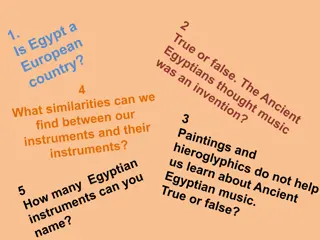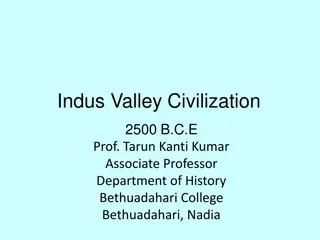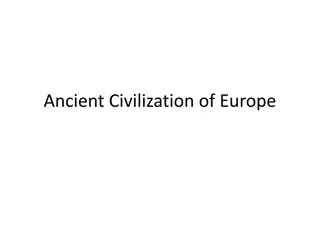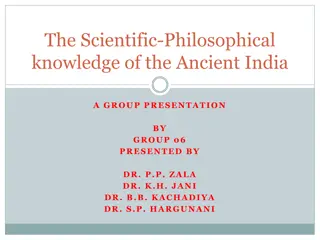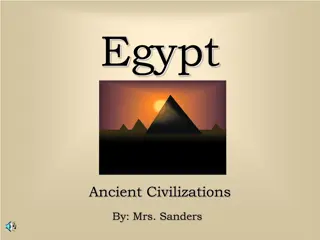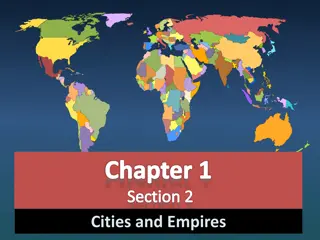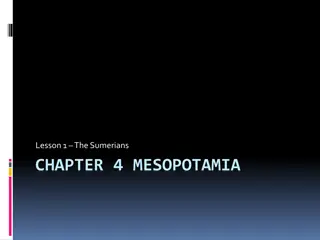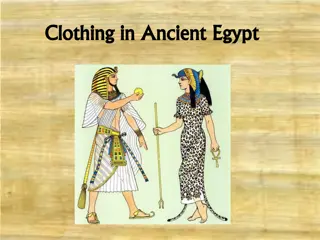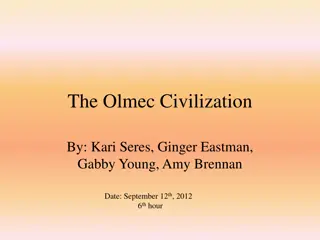
Ancient Indian Civilization: Harappan Culture & Legacy
Harappan civilization thrived around 3rd millennium BCE in the Indus and Ganges valleys, showcasing impressive cities, artistic pottery, and intricate sculptures. Explore the decline, religious developments, sculpture evolution, and Gupta Dynasty's impact on literary works in Ancient India. Witness the enduring legacy through cave temple construction and spiritual symbolism that shaped Indian art and culture.
Download Presentation

Please find below an Image/Link to download the presentation.
The content on the website is provided AS IS for your information and personal use only. It may not be sold, licensed, or shared on other websites without obtaining consent from the author. If you encounter any issues during the download, it is possible that the publisher has removed the file from their server.
You are allowed to download the files provided on this website for personal or commercial use, subject to the condition that they are used lawfully. All files are the property of their respective owners.
The content on the website is provided AS IS for your information and personal use only. It may not be sold, licensed, or shared on other websites without obtaining consent from the author.
E N D
Presentation Transcript
The Ancient Civilization of Harappa in Ancient India An exploration of the Harappan civilization and its cultural achievements
Introduction Harappan civilization flourished around the mid- 3rd millennium BCE in the Indus and Ganges river valleys. Comparable to developments in Egypt and Mesopotamia. Impressive cities with monumental architecture architecture and sophisticated drain systems. Artistic achievements in pottery, sculpture, and and seal tablets. Photo by Pexels Photo by Pexels
Art and Craftsmanship Harappan ceramics exhibited diverse forms and and intricate animal and plant motifs. Black paint on red background was a common common decorative style. Figurines of priests and dancers were common, showing unique characteristics. Ceramic objects from Mohenjo-daro showcased variety and elaborate ornamentation. Photo by Pexels Photo by Pexels
Decline and Legacy Harappa's decline in the mid-2nd millennium BCE, millennium BCE, possibly due to Aryan invasions, invasions, floods, or epidemics. Surviving inhabitants of Harappa believed in in reincarnation and worshiped animals like elephants and cows. Formation of three major religions: Brahmanism, Buddhism, and Jainism. Mauryan dynasty continued the cultural legacy, leaving remarkable architectural structures. Photo by Pexels Photo by Pexels
Development of Sculpture Different sculpture schools emerged: Gandhara, Mathura, and Amaravati. Early sculptures depicted traditional iconographic features of Buddha. Gandhara sculptures showed influence from Roman and Hellenistic styles. Mathura sculptures emphasized a softer interpretation of religious themes. Photo by Pexels Photo by Pexels
Gupta Dynasty and Literary Works Rise of the Gupta dynasty in the 3rd century CE marked an economic and cultural revival. Ancient Indian theater developed, influenced by Greek traditions. Epic literary works like the Mahabharata and Ramayana were composed. Bronze statues of Buddha showcased advanced technological processes. Photo by Pexels Photo by Pexels
Conclusion Ancient Indian civilization witnessed remarkable cultural achievements and artistic expressions. Continuity in cave temple construction, evolving styles, and deep spiritual symbolism. Preservation of ancient cave frescoes depicting various aspects of life and mythology. An enduring legacy that has left an indelible mark on Indian art and culture. Photo by Pexels Photo by Pexels











